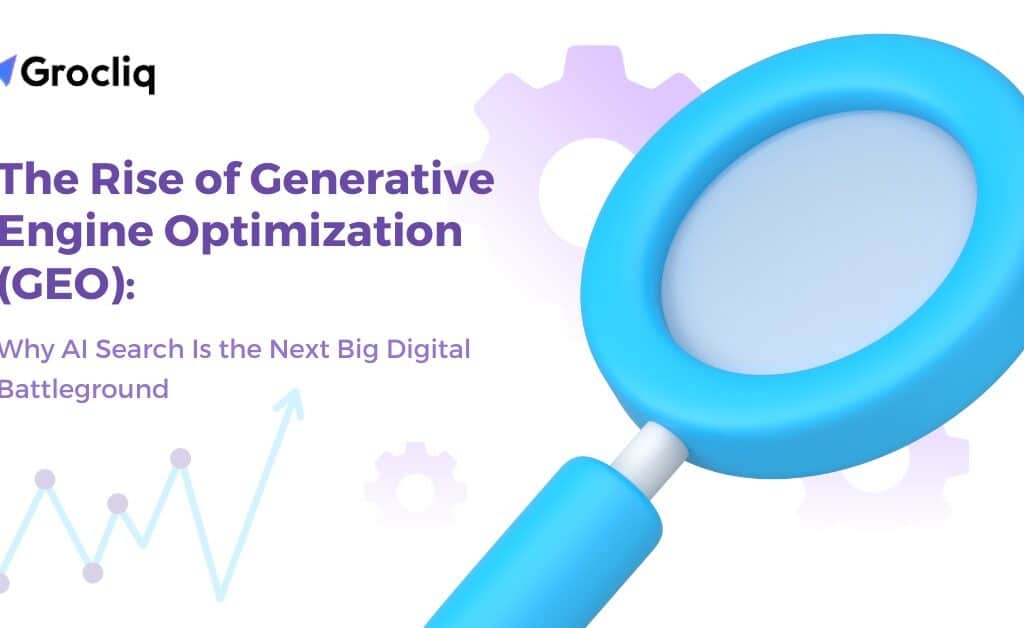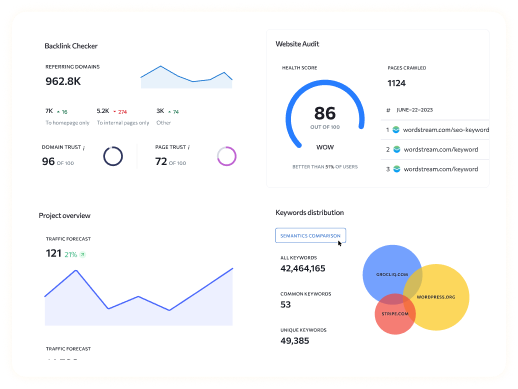As the use of AI-generated content continues to rise, many are asking the critical question: Are AI detectors accurate? In this article, we’ll provide an in-depth look at how AI detectors work and their overall reliability. We’ll also dive into how AI checkers function and how you can select the right tool for detecting AI-generated text.
With AI tools such as ChatGPT becoming more widespread, the need for AI content detection has never been greater. Whether you’re a marketer, educator, or content creator, understanding how accurate AI detectors are and how they work is essential to ensuring content authenticity and avoiding false positives.
What Are AI Detectors?
AI detectors are specialized tools designed to identify whether a piece of content was generated by artificial intelligence or written by a human. These detectors are crucial in various sectors, including education, content marketing, journalism, and regulatory industries like law and medicine, where authenticity and originality are vital.
By analyzing patterns within the text, AI detectors can determine if the content follows certain predictable structures or patterns typically seen in machine-generated content. As AI models improve and become more human-like, these detectors also need to evolve to remain accurate.
Common Use Cases for AI Detectors:
- Academic Integrity: Educational institutions use AI detectors to ensure that students submit original, human-generated work, reducing the risk of academic dishonesty.
- Journalism and Media: AI detectors help maintain the authenticity of articles and reports, ensuring that news content is not influenced by AI without proper citation.
- Regulated Industries: In fields like law and healthcare, the use of AI detectors ensures compliance with strict regulations by verifying that the content adheres to human oversight and ethical standards.
How Do AI Checkers Work?
To understand how AI checkers work, it’s important to break down their core processes. AI detectors rely on a combination of machine learning algorithms and statistical models to determine whether content was created by a machine. Here are some of the most important methods used:
- Perplexity: AI checkers analyze the text’s level of predictability. Human writing tends to be more creative and unpredictable, while AI-generated content is more likely to follow repetitive, predictable patterns.
- Burstiness: Humans naturally vary the length and complexity of sentences. AI-generated content often lacks this variation, resulting in uniform sentence structures. AI checkers look for these subtle differences.
- Language Embedding: AI checkers break down content into smaller segments, analyzing the frequency and structure of words. These patterns are compared against a vast database of known AI and human-generated text to identify similarities and differences.
- Word Frequency Analysis: AI models typically overuse certain words or phrases. AI detectors analyze this frequency and flag texts that have unusually high repetition, which is often a sign of machine-generated content.
Are AI Detectors Accurate?
So, are AI detectors accurate? The answer depends on several factors, such as the tool being used, the complexity of the content, and the latest developments in AI technology. In general, AI detectors can be highly accurate when identifying machine-generated content, but they are far from perfect. Accuracy typically ranges between 80% to 99%, with some tools outperforming others.
Key Factors Affecting Accuracy:
- The sophistication of AI Detectors: More advanced tools like GPTZero or Originality.ai boast higher accuracy rates due to their updated machine learning models.
- False Positives: Sometimes human-written content is mistakenly flagged as AI-generated. This can happen if the writing is overly formulaic or lacks complexity.
- False Negatives: Conversely, AI-generated content may slip through undetected, especially if the AI has been designed to mimic human writing or has been edited post-generation by a human.
Key Points to Consider:
- Training Data: The quality and diversity of the training data used to develop AI detectors significantly impact their accuracy. Tools with broader datasets tend to perform better.
- Rapid AI Evolution: AI models, such as GPT-4, are constantly evolving and becoming more adept at mimicking human-like writing. This makes it harder for detectors to keep pace, leading to potential gaps in detection.
- Content Complexity: The more nuanced and creative the content, the harder it is for AI detectors to accurately classify it. Simpler, more straightforward texts are easier for AI checkers to identify as machine-generated.
Factors That Impact AI Detection Accuracy
Several critical factors influence how accurate an AI detector will be:
- Training Data Quality: Detectors trained on large, diverse datasets of both AI and human-generated text will produce more reliable results. The broader the scope, the better it can detect various content types.
- Evolving AI Models: The continuous development of AI, like the introduction of GPT-4, makes it increasingly difficult for detectors to keep up. Detectors need to be updated regularly to catch up with the latest advancements in AI content creation.
- Content Structure: Simpler texts are easier to identify. However, complex content that combines human and AI-generated text can confuse detectors, leading to more false positives or negatives.
- AI-Human Hybrid Content: In some cases, content is created through a mix of AI and human effort. This hybrid approach can be particularly challenging for AI detectors to flag correctly since the content straddles the line between machine and human authorship.
How Reliable Are AI Detectors in Practice?
In practice, AI detectors can be useful, but their reliability varies based on the tool, the content type, and the underlying model. Here are some key issues that may arise when relying solely on these detectors:
- Inconsistent Results: Different AI checkers can provide varying results for the same content. For example, a text might be flagged as 100% AI-generated by one detector, but pass as human-written in another.
- False Positives: When human content is falsely identified as AI-generated, it can lead to problems in academic or professional settings, potentially damaging reputations.
- Free vs. Paid Tools: While free tools are tempting, they often lack the sophistication of paid options, leading to higher rates of false results.
Even with these limitations, AI detectors can serve as a helpful initial screening tool, especially when backed by manual review.
How to Find a Reliable AI Detector
When looking for a reliable AI detector, consider the following tips:
- Test the Tool First: Always test detectors on texts you know are AI-generated and human-written. This will give you a sense of how accurate the tool is before you rely on it for critical work.
- Cross-Check Multiple Detectors: Since different tools can give different results, cross-check content using multiple AI detectors to get a clearer picture.
- Look for Paid, Reputable Tools: Paid detectors like Originality.ai or Copyleaks generally offer more advanced features and better accuracy than free tools.
- Read Reviews and User Feedback: Look for feedback from other users to get a better idea of the tool’s real-world performance.
How to Bypass AI Detectors & Humanize AI Content
If you’re working with AI-generated content and want to ensure it passes undetected, here are some effective ways to humanize the text:
- Vary Sentence Lengths: AI-generated content often uses consistent sentence structures. Adding short, punchy sentences followed by longer, more complex ones makes the text feel more human.
- Use Colloquial Language: Incorporating slang, idiomatic expressions, and conversational tones can help bypass AI detectors.
- Add Personal Stories or Examples: Including personal anecdotes or real-life examples adds a layer of authenticity that AI-generated content often lacks.
- Synonym Replacement: Avoid repetitive phrases by replacing commonly used words with synonyms to make the text less predictable.
- Mix AI and Human Content: Blend AI-generated content with human-written sections to make it harder for AI detectors to flag the content.
By following these techniques, you can effectively “humanize” your content, making it more engaging and less likely to be flagged by detectors.
Conclusion
Are AI detectors accurate? They can be, but they aren’t perfect. As AI continues to advance, so must the tools used to detect it. Understanding how AI checkers work is essential in choosing the right tool for your needs. By combining AI detectors with human oversight, you can ensure content authenticity and accuracy.
For the most reliable results, always cross-check content across multiple detectors and use a blend of AI tools and human judgment. With the right approach, you can confidently assess whether your content is human-generated or machine-made.
Note: Read Our Latest Blogs on Marketing, AI, and SEO:
AI generator text | How to go live on TikTok | Reword.co Alternatives | TikTok search | How old is Google? | SEMrush vs SpyFu | Google alternatives | AnswerThePublic alternative | Sudowrite | SEMrush pricing | How many subscribers does MrBeast have? | When was Instagram created? | Subject matter expert | AI email writer | Ahrefs pricing | Ahref vs Moz | How many people use Google? | SE Ranking | SEO consulting | SEO consultant near me | SEMrush vs Moz | How to use LinkedIn | SEO for dentists | Simplified alternatives | SEO software for agencies | Are AI detectors accurate? | SEO tracking | Trademark symbol | ChatGPT plugins | GPT builder | Auto inventory ads keyword | BigCommerce pricing | Etsy SEO | ChatGPT detector | Affordable SEO | Meta employee count | SEO automation software | SEMrush alternative | How many pictures can you post on Instagram? | SEO for plumbers
Frequently Asked Questions:
Q1. Are AI detectors accurate?
A1. Yes, AI detectors can be accurate, but their effectiveness depends on the tool, the content type, and the training data.
Q2. How do AI checkers work?
A2. AI checkers analyze text patterns like perplexity, burstiness, and word frequency to detect whether a machine or human generated the content.
Q3. Can AI detectors identify all AI-generated content?
A3. Not always. Some AI-generated content can evade detection, especially if it’s edited or blended with human writing.
Q4. What are false positives in AI detection?
A4. False positives occur when human-written content is incorrectly flagged as AI-generated by the detector.
Q5. What are false negatives in AI detection?
A5. False negatives happen when AI-generated content is not detected by the tool and passes as human-written content.
Q6. How can I humanize AI-generated content?
A6. Use varied sentence lengths, add personal stories, use colloquial language, and mix AI with human-written text to humanize the content.
Q7. Are free AI detectors reliable?
A7. Free AI detectors can work, but paid options tend to offer more accurate and consistent results.
Q8. Can AI detectors harm professional relationships?
A8. Yes, if human-written content is falsely flagged as AI-generated, it can lead to trust issues in academic or professional settings.





